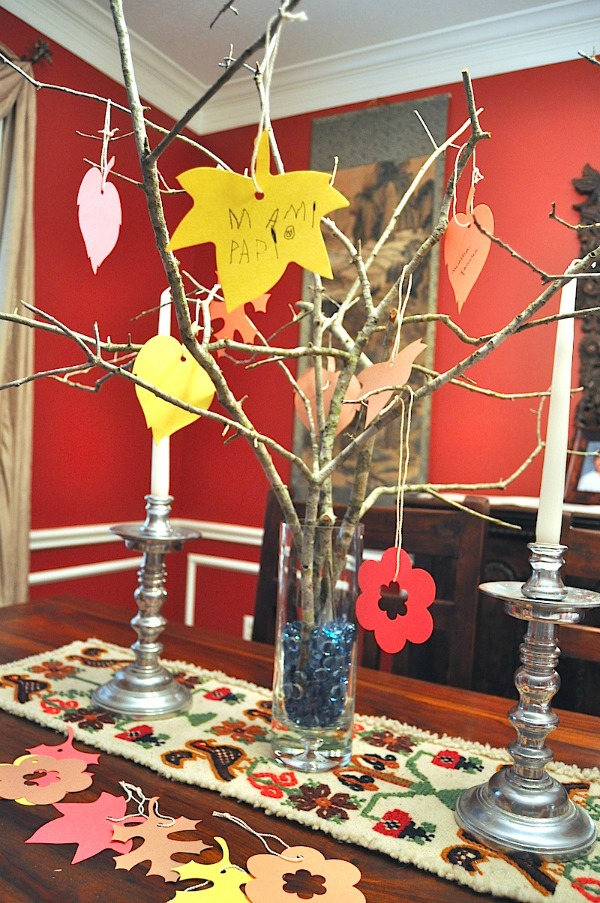The very first Thanksgiving my husband and I spent together, was only three months after we had met and started dating.What a valiant boyfriend, to accept an invitation home to meet my family on one of my family’s favorite holidays! This intimidating family feast included 60 of my aunts, uncles and cousins in an animated sit-down dinner. As Toño followed the boisterous conversations, he may not have captured all of the English — but the warm hugs and laughter gave him insight into my family’s dynamics and values.
Not only did he meet my many relatives for the first time, this was also his introduction to the typical cuisine of Thanksgiving: turkey, stuffing, mashed potatoes, sweet potatoes, green beans, cranberry sauce and pecan pie. Toño and I fondly remember our first Thanksgiving, and marvel at how the holiday has evolved to be a bicultural family celebration that meshes our two cultures as we integrate Mexican flavors into traditional fare, and give thanks for everything that is important to us.
To begin our family holiday, the kids and I search for fallen tree branches to make our centerpiece: the “Árbol de la Gratitud.” I cut out leaves from colorful construction paper, punch holes, and carefully loop string through each one. Everyone is invited to write what they are thankful for — en español of course — and then hang their hoja on the tree. We love to read what each child appreciates and is thankful for, whether it is our family and friends, our pets, our house or favorite toys. “Gracias por mi escuela y maestra” was one of my favorite leaves, written in wobbly letters that seemed intent on conveying their important message.
We also incorporate some Latino flavors into the Thanksgiving dinner, by taking the conventional dishes and tweaking the seasonings. For example, we might begin with a brown sugar, chipotle and cumin rub on the turkey, which adds just a bit of smoky heat. Our cranberry sauce has a tropical flair with added tamarindo paste, and for a salad we love to make “Ensalada de Nochebuena.” Normally eaten on Christmas Eve (with turkey!), this colorful, cold salad includes beets, jicama, apples and peanuts in a cinnamon-infused orange juice dressing. The pastel de elote (a sweet corn bread) and dulce de camote (sweet potato candy) are served beside pumpkin and pecan pies for dessert.
I have been told that infusing Central and South American ingredients facilitates the adoption of Thanksgiving traditions into the Hispanic community. Whether it is a roast turkey, turkey mole or tamales de pavo, the ever-evolving menu and blending of cultures is truly a reflection of our diverse nation. No matter what is served at this special meal, people around the United States acknowledge that Thanksgiving is a time to reflect on our blessings and share our table with loved ones. Though many of us live far away from our families, we gather with our dearest friends to share our bounty and celebrate this holiday.
However we celebrate Thanksgiving, and whatever food we choose to serve, the true beauty of this holiday is to show our gratitude and appreciation for all that we have. No matter what culture we are from, the idea of being thankful for everything we have is one of the most valuable lessons we can teach our children.
Here’s hoping you have a Happy Thanksgiving!



I love this tree idea! – I will definitely make it next year with my familia, great article and gracias Becky!
Thanks Xochitl! Everything the kids wrote was so cute: “mis juguetes,” “mis perros,” “mi maestra..” My little one wrote “las fresas.”
Con exactamente el mismo cortador redondo que empleamos para hacer
la barriguita, cortaremos un círculo y éste
a su vez le recortaremos los extremos.